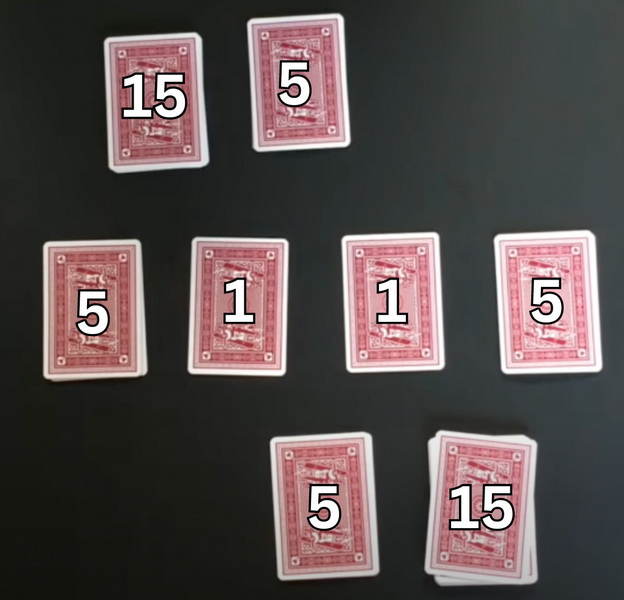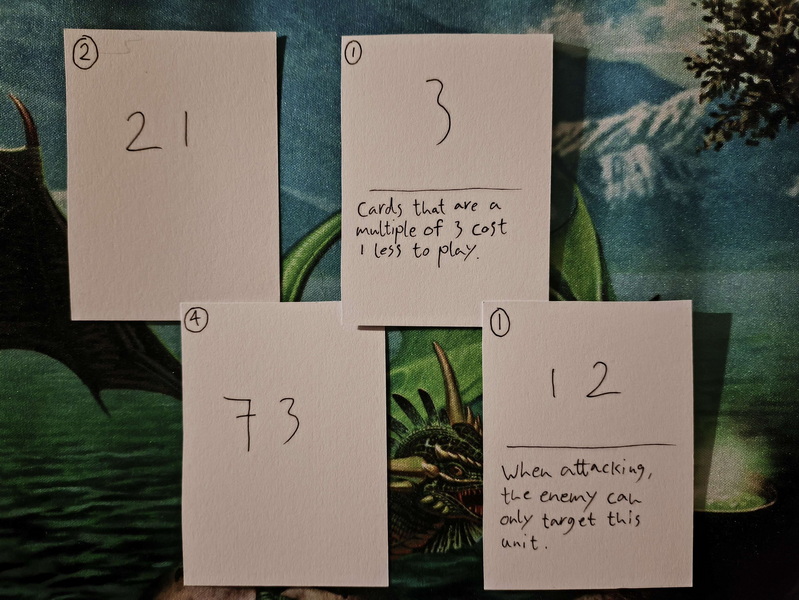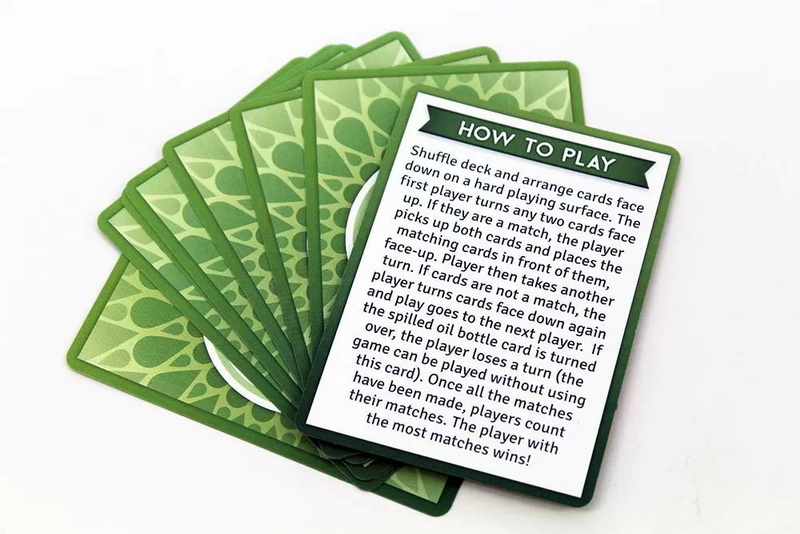Content Menu
● Understanding Your Audience
● Conceptualizing Your Game
● Designing Game Components
● Playtesting Your Game
● Finalizing Your Design
● Marketing Your Card Game
● Balancing Simplicity and Complexity
● Designing the Deck
● Creating Card Layout and Artwork
● Rules and Structure
● Iterative Testing Process
● Conclusion
● Related Questions
>> 1. What are some common themes for card games?
>> 2. How do I balance my card game's mechanics?
>> 3. What tools can I use for card design?
>> 4. How many players should my card game accommodate?
>> 5. What should I include in my game's rulebook?
● Citations:
Designing a card game can be an exciting and rewarding endeavor. Whether you're inspired by existing games or have a unique concept in mind, the process involves several key steps that will help you create a game that is engaging, fun, and well-balanced. This guide will walk you through the essential phases of card game design, from initial concept to final prototype.

Understanding Your Audience
Before diving into the mechanics and aesthetics of your game, it's crucial to understand who your target audience is. Knowing your community will help you tailor your game to their interests and preferences.
- Identify Your Demographic: Determine the age group, interests, and gaming experience of your potential players. Are they casual gamers, hardcore enthusiasts, or a mix of both?
- Research Existing Games: Look at popular card games within your target demographic. Analyze what makes them appealing and what elements resonate with players.
- Gather Feedback: Engage with potential players through surveys or discussions to gather insights on their preferences. This information can guide your design choices.
Conceptualizing Your Game
Once you have a clear understanding of your audience, it's time to brainstorm ideas for your card game.
- Choose a Theme: A strong theme can enhance player engagement. Consider various themes such as fantasy, sci-fi, mystery, or even educational topics. The theme should resonate with your target audience.
- Define Game Mechanics: Decide how players will interact with the game. Will it be competitive or cooperative? What are the win conditions? Establishing clear mechanics early on will provide a framework for your design.
- Create a Unique Hook: Identify what sets your game apart from others. This could be a unique gameplay mechanic, an innovative scoring system, or an engaging narrative element.
Designing Game Components
The next phase involves designing the physical components of your card game.
- Card Types and Functions: Determine the types of cards you will include (e.g., action cards, character cards, event cards) and their functions within the game. Each type should serve a distinct purpose.
- Visual Design: Focus on creating visually appealing cards that are easy to read and understand. Use contrasting colors, clear fonts, and engaging artwork to capture attention while ensuring readability.
- Prototype Creation: Create rough prototypes of your cards using simple materials like cardstock or digital tools like Photoshop or Nandeck. This allows for quick iterations and testing without significant investment.
Playtesting Your Game
Playtesting is one of the most critical steps in the game design process.
- Gather a Testing Group: Invite friends or fellow gamers to playtest your prototype. Ensure that they represent your target audience for more relevant feedback.
- Observe Gameplay: Pay attention to how players interact with the game. Are there any confusing rules? Do players understand the mechanics? Take notes on their experiences and suggestions for improvement.
- Iterate Based on Feedback: Use the feedback gathered during playtesting to make necessary adjustments to your game's mechanics, rules, or design elements. This iterative process is vital for refining your game into a polished product.
Finalizing Your Design
After multiple rounds of testing and refinement, it's time to finalize your card game's design.
- Create Detailed Rules: Write clear and concise rules that explain how to play the game, including setup instructions, gameplay mechanics, and win conditions. Consider including examples to clarify complex rules.
- Professional Artwork: If you're not an artist yourself, consider hiring a professional illustrator or graphic designer to create high-quality artwork for your cards. The visual appeal can significantly impact player interest.
- Production Considerations: Research printing options for producing your final cards and packaging. Consider factors like cost, quality, and distribution methods when selecting a printing service.

Marketing Your Card Game
Once you have a finished product, think about how you'll market it to reach your audience effectively.
- Build an Online Presence: Create social media accounts or a website dedicated to your game where you can share updates, artwork, and engage with potential players.
- Attend Conventions: Participate in gaming conventions or local events to showcase your game and gather feedback from a broader audience.
- Crowdfunding Options: If you're looking for funding to produce your game at scale, consider using crowdfunding platforms like Kickstarter or Indiegogo to gain financial support from interested backers.
Balancing Simplicity and Complexity
A successful card game strikes a balance between being easy to learn while offering depth in strategy.
- Ease of Understanding: The rules should be straightforward but allow for meaningful choices during gameplay. Players should feel empowered by their decisions without becoming overwhelmed by complexity.
- Depth of Strategy: Provide players with various strategic options through different card effects and combinations. This encourages replayability as players explore different strategies in subsequent games[1][2].
Designing the Deck
The composition of the deck is crucial in determining how players experience the game.
- Size and Composition: Decide on the size of the deck (e.g., 40 cards vs 60 cards) and how many of each type of card will be included (e.g., action cards vs resource cards).
- Variability and Replayability: Ensure that there are enough unique cards in the deck so that no two games feel exactly alike. This can include varying card abilities that interact differently based on player choices[4].
Creating Card Layout and Artwork
The layout of each card is vital for clarity and engagement during play.
- Card Layout: Design a clear layout where important information is easily accessible—such as card name, type, cost, effects—while also maintaining an aesthetically pleasing look[5].
- Artwork and Theme Integration: The artwork should not only be visually appealing but also enhance the game's theme and story elements. Engaging visuals can draw players in while also providing context for gameplay mechanics[6].
Rules and Structure
A well-defined structure is essential for smooth gameplay experiences.
- Writing the Rulebook: Develop a comprehensive rulebook that covers all possible scenarios in clear language while also being easy to reference during play sessions[1][4].
- Game Structure: Outline each player's turn structure clearly so that everyone knows what actions they can take during their turn—this helps maintain flow throughout gameplay[2][3].
Iterative Testing Process
Testing should occur throughout all stages of development—not just at the end.
- Early Playtesting: Test early prototypes with friends or family before finalizing rules or components; this helps identify any major issues before they become ingrained in later designs[7].
- Feedback Collection: Collect feedback after each testing session; different perspectives can highlight aspects that may need adjustment or improvement[8].
Conclusion
Designing a card game is an intricate process that combines creativity with strategic thinking. By understanding your audience, conceptualizing engaging gameplay mechanics, designing visually appealing components, conducting thorough playtesting, finalizing the design based on feedback, balancing simplicity with complexity, structuring rules effectively, creating engaging artwork, iterating through testing phases continuously—and marketing effectively—you can create a card game that resonates with players and stands out in the market.
With dedication and passion for gaming design, you can bring your unique vision to life and share it with fellow enthusiasts around the world.

Related Questions
1. What are some common themes for card games?
Common themes include fantasy (like magic or mythical creatures), sci-fi (space exploration), historical events (wars or civilizations), mystery (detective stories), and humor (light-hearted party games).
2. How do I balance my card game's mechanics?
Balancing mechanics involves playtesting extensively to identify overpowering strategies or cards. Adjust costs, effects, or rules based on player experiences until all elements feel fair and engaging.
3. What tools can I use for card design?
You can use graphic design software like Adobe Photoshop or free alternatives like GIMP and Photopea for creating card layouts. For prototyping specifically tailored for card games, Nandeck is highly recommended.
4. How many players should my card game accommodate?
Consider designing for various player counts based on your target audience's preferences; common configurations include 2–4 players for small group dynamics or larger setups accommodating up to 8 players for party games.
5. What should I include in my game's rulebook?
Your rulebook should contain an overview of the game's objective, setup instructions, detailed gameplay rules (including turn structure), examples of play scenarios if necessary, and endgame conditions.
Citations:
[1] https://mahtgiciangames.com/blogs/the-creative-workshop-game-design-blueprints/card-game-design-essentials-building-the-foundation
[2] https://www.ducksauce.games/blog/how-to-design-a-card-game
[3] https://www.reddit.com/r/tabletopgamedesign/comments/rd2vn0/how_to_make_a_card_game/
[4] https://www.qinprinting.com/blog/how-to-design-a-card-game/
[5] https://www.youtube.com/watch?v=XDd4u2xnRtE
[6] https://thesciencesurvey.com/arts-entertainment/2021/03/21/blank-cards-how-do-you-create-a-card-game-from-scratch/
[7] https://praliedutzel.wordpress.com/2013/01/31/creating-a-card-game-from-start-to-finish/
[8] https://www.bgdf.com/blog/considerations-when-making-boardcard-game
































